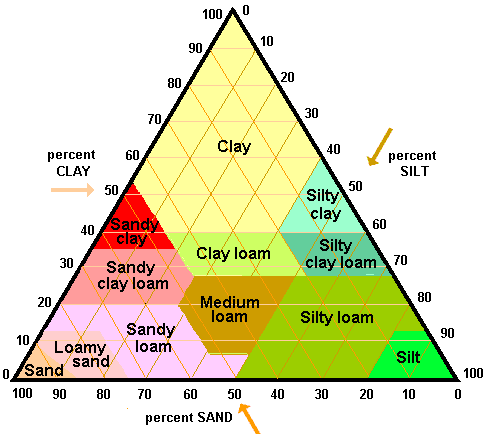Down and Dirty Soils of Redlands and the Impact to your Trees
How the Soils of Redlands, CA Affect Tree Growth
Redlands, California, is home to a diverse range of tree species, from towering native oaks to vibrant ornamental trees lining city streets. One of the key factors influencing tree health and growth in the area is the soil. The soil composition determines a variety of factors including: water retention, drainage, and nutrient availability. Using data from the Natural Resource Conservation Service Soil Survey of Redlands, this blog explores the impact of various soil types on tree growth, so you can better understand what we don’t see with the human eye related to your trees.
NRCS soil survey map of Redlands with soil types listed as abbreviations
The Misconception of Redlands Soils
Most Redlands residents grew up hearing about the city's famous 'red clay,' assuming it was the dominant soil type in the city. After all, it is how the city got its name. However, while clay-rich soils exist in some areas, they are actually only found in a relatively minor party of the city. Redlands is home to a variety of soil types that influence tree growth in unique ways, the most dominant types being sandy loam and loamy sand (more on that below). This famous Red clay is not as common as many people tend to believe but does exist in some key historic areas throughout the city. It is worth mentioning that some of the largest and oldest trees in the city are found in areas where this clay soil type exists including the trees of prospect park and the possibly tallest tree in the city, a 140 foot Eucalyptus globulus along the South side of E Citrus Ave at Redlands High School.
The Soil Textural Triangle
It is important to understand a soil textural triangle when thinking about soils in your area. The easiest way to do a soil test is to dig down and get a scoop of dirt, shake it up vigorously in some water filled in a mason jar, and let it sit over night. the next morning you can observe sand at the bottom, silt being the next layer, and clay on the top. Take the rough percentages and corelate them with the triangle below to find your soil type.
Soil Textural Triangle
3 Major Soil Types in Redlands and Their Influence on Trees
Ramona Sandy Loam
Ramona Sandy Loam is a well-draining soil with moderate water-holding capacity. It is often found in gently sloping terrain and is well-suited for fruit trees, including citrus and avocados, which have thrived in Redlands for decades. This soil type provides a good balance of drainage and nutrient retention, making it ideal for many landscape and native trees. On the map above, these soil types are listed as abbreviations RmC, RmD, and RmE2.
Typical Soil Profile Horizon Layers
Ap - 0 to 12 inches: sandy loam
A - 12 to 23 inches: fine sandy loam
Bw - 23 to 32 inches: loam
Bt - 32 to 54 inches: clay loam
C - 54 to 60 inches: sandy loam
Drainage class: Well drained
Tujunga Loamy Sand
Similar to Tujunga Sandy Loam, Tujunga Loamy Sand has an even higher sand content, making it one of the fastest-draining soil types in the region. Trees planted in this soil must be selected carefully, as only highly drought-tolerant species, such as mesquites and palo verde, will thrive without frequent watering. On the map above, this soil type is listed as abbreviation TuB
Typical Soil Profile Horizon Layers
A - 0 to 6 inches: loamy sand
C1 - 6 to 18 inches: loamy sand
C2 - 18 to 60 inches: loamy sand
Drainage class: Somewhat excessively drained
Hanford Coarse Sandy Loam
Hanford Coarse Sandy Loam is a well-drained alluvial soil commonly found in valleys and near riverbeds. It supports a wide variety of trees, from citrus groves to native oaks. This soil type offers excellent root aeration while holding enough moisture to sustain tree growth, making it one of the more versatile soils for urban and agricultural forestry in Redlands. On the map above, this soil type is listed as the abbreviation HaC and HaD,
Typical Soil Profile Horizon Layers
A - 0 to 12 inches: sandy loam
C - 12 to 60 inches: fine sandy loam
Drainage class: Well drained
How to Improve your Soil
Addition of organic matter seems to help with all soil types in Redlands, CA. Because most soils in Redlands are fast draining and have a high percentage of sand and silt, organic matter can aid in nutrient retention, cation exchange and nutrient availability and water retention. Organic matter tends to help with all soil types, acting as a buffer that compensates for what the soil is lacking in. For example, organic matter tends to increase drainage in heavy clay soils while increasing water retention in sandy soils. Because sandier soils hold less nutrients, addition of manures and composts significantly help with nutrient retention and improving the soil microbiome. Specialty products that Cambium Tree Experts applies as amendments include alfalfa meal and kelp meal, both of which provide natural plant hormones and a small amount of slow release N-P-K.
Wrap Up
Soils can get about a million times deeper than we’ve gone in this short article. In future posts we’ll cover more soil topics, but for this week’s post we’ll keep things short and just leave you with one request, know your soil type! Utilize the NRCS link above to find the soil type where you live to see what trees would be ideal for planting or how you can improve the current soil conditions you have for your trees to thrive. As always, if you have any questions whatsoever, contact Cambium Tree Experts for top advice for your trees. Hope to grab your attention next week with an in depth look at citrus trees and how to give them proper fertilization and care.
#Cambium



